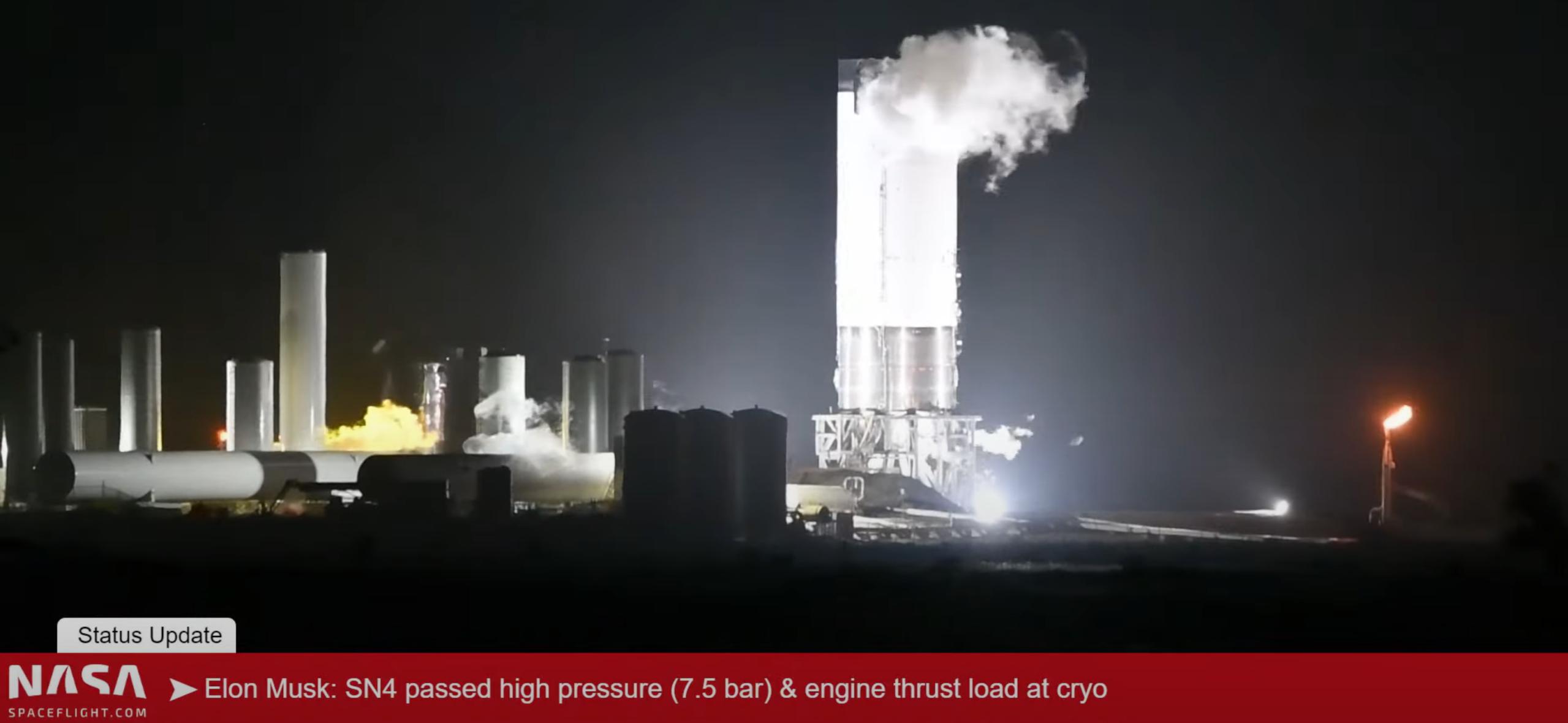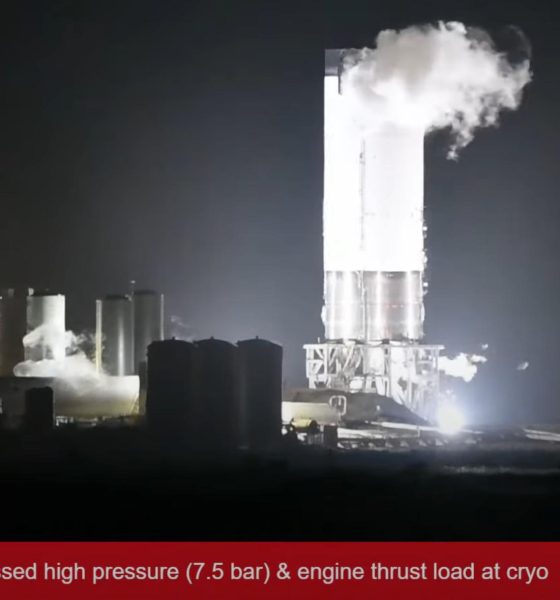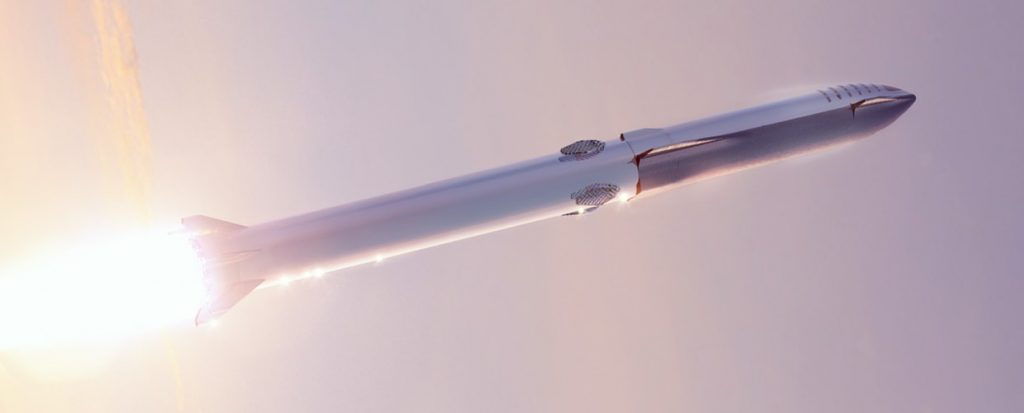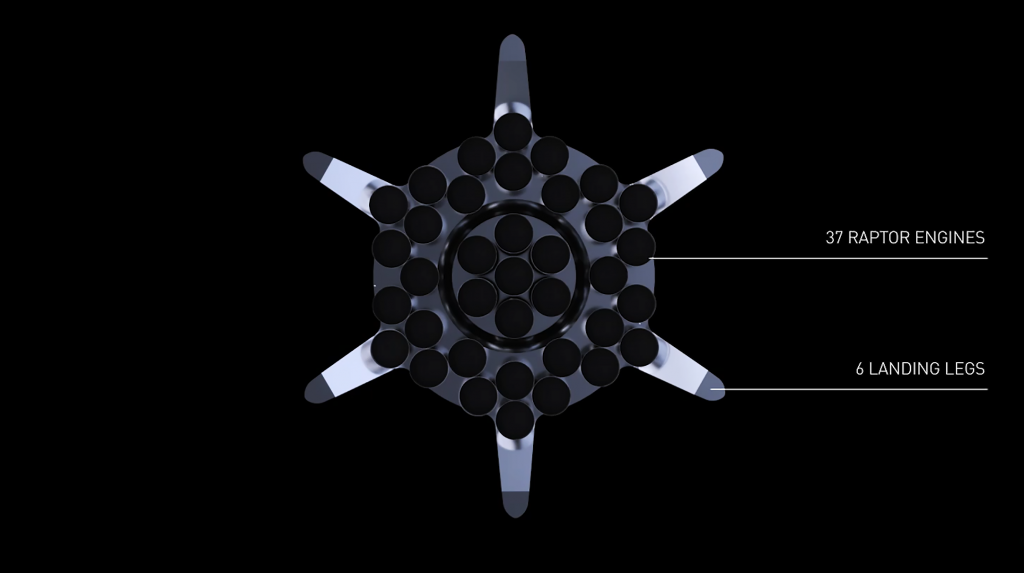

News
SpaceX’s Starship rocket just took a big leap towards orbit with latest test success
A full-scale Starship rocket has passed a critical test for the first time ever, strongly suggesting that the next-generation launch vehicle could be much closer to orbital readiness than most would imagine.
To be clear, a huge amount of work remains before Starship can be deemed anywhere close to its first orbital flight tests, not the least of which is the fabrication and assembly of the first massive Super Heavy booster(s). However, after Starship SN4’s latest successful May 9th test, it’s hard to see any apparent showstoppers that can’t be handled with a combination of fairly routine testing and iterative progress, as well as time and money. There is certainly room for improvement throughout the program but SpaceX has effectively demonstrated that the biggest practical concerns about its approach to Starship are moot.
Captured live on May 9th and 10th by local resident and photographer Mary (bocachicagal) with the help of NASASpaceflight.com, SpaceX worked for about two days to reconfigure its fourth full-scale Starship prototype after two successful Raptor engine static fires and prepare it for a different kind of test. That work mainly involved removing said Raptor and replacing it with a hydraulic ram stand used to simulate the thrust of 1-3 engines without actually needing to perform a static fire test, further allowing SpaceX to simulate much longer engine operations than its spartan test pad could survive. Around 9pm CDT on May 9th (02:00 UTC, May 10), Starship SN4’s latest trial began.
Known as a cryogenic pressure and load test, it differed from a prior “cryo proof test” completed on April 26th, in which Starship was fully loaded with liquid nitrogen (more than twice as cold as dry ice), pressurized to a bit less than 5 bar (~70 psi), and stressed with hydraulic rams. About a week later, after installing a Raptor engine on a full-scale Starship prototype for the first time ever, Starship SN4 fired up said engine on May 5th – another historic first for the next-generation launch vehicle. 30 hours later, SpaceX performed another wet dress rehearsal (WDR) with liquid methane and oxygen and fired up Starship’s Raptor engine again.
After about 48 hours of reconfiguration, SpaceX moved on to a much more serious cryogenic test. As noted by CEO Elon Musk, the 4.9 bar the rocket previously reached was accepted as enough to perform a Raptor static fire test and possibly enough for a low-stress, low-altitude flight test to ~150m (500 ft). For orbital flight, however, Starship needs to withstand a minimum of 6 bar (~90 psi), while 8.5 bar (125 psi) is preferable to give the rocket the 1.4x safety factor optimal for human spaceflight.
This time, SpaceX – having successfully gathered data from two static fire tests and several wet dress rehearsals – was ready to risk Starship SN4 and pressurized it all the way to 7.5 bar (~110 psi). While ~12% shy of minimum human spaceflight standards, Starship SN4 successfully reached and maintained 7.5 bar while the ship stressed with hydraulic rams to simulate the thrust of three Raptor engines, all of which it survived fully intact. What 7.5 bar does offer, however, is a 1.25x safety factor – on the higher end of aerospace industry standards for uncrewed orbital spaceflight (i.e. cargo/satellite launches).

Ready for orbit?
Technically, this means that – pending much additional testing and verification with different serial prototypes and (likely) higher pressures – Starship’s stainless steel structure is effectively qualified for uncrewed orbital launches. Of course, reality is much more complex. To actually perform and survive orbital flights, SpaceX will first need to build and similarly qualify the first Super Heavy boosters and ensure that those unprecedentedly large rockets can survive and sustain ~20-30 Raptor engines firing simultaneously.

Aside from Super Heavy, it’s unknown if SpaceX has begun testing Raptor engines at the durations they will need to burn to booster Starships into orbit (TBD; likely 5-10 minutes of continuous operation). Along those lines, SpaceX also needs to build, test, and qualify Raptor’s vacuum-optimized sibling to complement the sea level version’s smaller, less-efficient nozzle. Still, Musk has already revealed that RaptorVac could be a matter of weeks from its first static fire and rocket engine development – while incredibly challenging – is more of a known quantity for SpaceX.
Perhaps the most important unknown is whether SpaceX’s recent May 2020 WDRs and static fires have used autogenous pressurization, a more efficient method of pressurizing rockets by using hot gas generated by their own engines. It’s extremely likely that SpaceX has been autogenously pressurizing Starship SN4 for its recent tests, but if that weren’t the case, it would be a big source of schedule uncertainty without significant redesign work.
Ultimately, SpaceX appears to have proven that orbital-class rockets can be built cheaply out of commodified steel in extraordinarily spartan production facilities. Many, many challenges remain but the biggest uncertainty and hurdle facing SpaceX’s Starship program and ambitions is well on its way to being fully put to rest.

News
Tesla FSD fleet is nearing 7 billion total miles, including 2.5 billion city miles
As can be seen on Tesla’s official FSD webpage, vehicles equipped with the system have now navigated over 6.99 billion miles.

Tesla’s Full Self-Driving (Supervised) fleet is closing in on almost 7 billion total miles driven, as per data posted by the company on its official FSD webpage.
These figures hint at the massive scale of data fueling Tesla’s rapid FSD improvements, which have been quite notable as of late.
FSD mileage milestones
As can be seen on Tesla’s official FSD webpage, vehicles equipped with the system have now navigated over 6.99 billion miles. Tesla owner and avid FSD tester Whole Mars Catalog also shared a screenshot indicating that from the nearly 7 billion miles traveled by the FSD fleet, more than 2.5 billion miles were driven inside cities.
City miles are particularly valuable for complex urban scenarios like unprotected turns, pedestrian interactions, and traffic lights. This is also the difference-maker for FSD, as only complex solutions, such as Waymo’s self-driving taxis, operate similarly on inner-city streets. And even then, incidents such as the San Francisco blackouts have proven challenging for sensor-rich vehicles like Waymos.
Tesla’s data edge
Tesla has a number of advantages in the autonomous vehicle sector, one of which is the size of its fleet and the number of vehicles training FSD on real-world roads. Tesla’s nearly 7 billion FSD miles then allow the company to roll out updates that make its vehicles behave like they are being driven by experienced drivers, even if they are operating on their own.
So notable are Tesla’s improvements to FSD that NVIDIA Director of Robotics Jim Fan, after experiencing FSD v14, noted that the system is the first AI that passes what he described as a “Physical Turing Test.”
“Despite knowing exactly how robot learning works, I still find it magical watching the steering wheel turn by itself. First it feels surreal, next it becomes routine. Then, like the smartphone, taking it away actively hurts. This is how humanity gets rewired and glued to god-like technologies,” Fan wrote in a post on X.
News
Tesla starts showing how FSD will change lives in Europe
Local officials tested the system on narrow country roads and were impressed by FSD’s smooth, human-like driving, with some calling the service a game-changer for everyday life in areas that are far from urban centers.

Tesla has launched Europe’s first public shuttle service using Full Self-Driving (Supervised) in the rural Eifelkreis Bitburg-Prüm region of Germany, demonstrating how the technology can restore independence and mobility for people who struggle with limited transport options.
Local officials tested the system on narrow country roads and were impressed by FSD’s smooth, human-like driving, with some calling the service a game-changer for everyday life in areas that are far from urban centers.
Officials see real impact on rural residents
Arzfeld Mayor Johannes Kuhl and District Administrator Andreas Kruppert personally tested the Tesla shuttle service. This allowed them to see just how well FSD navigated winding lanes and rural roads confidently. Kruppert said, “Autonomous driving sounds like science fiction to many, but we simply see here that it works totally well in rural regions too.” Kuhl, for his part, also noted that FSD “feels like a very experienced driver.”
The pilot complements the area’s “Citizen Bus” program, which provides on-demand rides for elderly residents who can no longer drive themselves. Tesla Europe shared a video of a demonstration of the service, highlighting how FSD gives people their freedom back, even in places where public transport is not as prevalent.
What the Ministry for Economic Affairs and Transport says
Rhineland-Palatinate’s Minister Daniela Schmitt supported the project, praising the collaboration that made this “first of its kind in Europe” possible. As per the ministry, the rural rollout for the service shows FSD’s potential beyond major cities, and it delivers tangible benefits like grocery runs, doctor visits, and social connections for isolated residents.
“Reliable and flexible mobility is especially vital in rural areas. With the launch of a shuttle service using self-driving vehicles (FSD supervised) by Tesla in the Eifelkreis Bitburg-Prüm, an innovative pilot project is now getting underway that complements local community bus services. It is the first project of its kind in Europe.
“The result is a real gain for rural mobility: greater accessibility, more flexibility and tangible benefits for everyday life. A strong signal for innovation, cooperation and future-oriented mobility beyond urban centers,” the ministry wrote in a LinkedIn post.
News
Tesla China quietly posts Robotaxi-related job listing
Tesla China is currently seeking a Low Voltage Electrical Engineer to work on circuit board design for the company’s autonomous vehicles.

Tesla has posted a new job listing in Shanghai explicitly tied to its Robotaxi program, fueling speculation that the company is preparing to launch its dedicated autonomous ride-hailing service in China.
As noted in the listing, Tesla China is currently seeking a Low Voltage Electrical Engineer to work on circuit board design for the company’s autonomous vehicles.
Robotaxi-specific role
The listing, which was shared on social media platform X by industry watcher @tslaming, suggested that Tesla China is looking to fill the role urgently. The job listing itself specifically mentions that the person hired for the role will be working on the Low Voltage Hardware team, which would design the circuit boards that would serve as the nervous system of the Robotaxi.
Key tasks for the role, as indicated in the job listing, include collaboration with PCB layout, firmware, mechanical, program management, and validation teams, among other responsibilities. The role is based in Shanghai.
China Robotaxi launch
China represents a massive potential market for robotaxis, with its dense urban centers and supportive policies in select cities. Tesla has limited permission to roll out FSD in the country, though despite this, its vehicles have been hailed as among the best in the market when it comes to autonomous features. So far, at least, it appears that China supports Tesla’s FSD and Robotaxi rollout.
This was hinted at in November, when Tesla brought the Cybercab to the 8th China International Import Expo (CIIE) in Shanghai, marking the first time that the autonomous two-seater was brought to the Asia-Pacific region. The vehicle, despite not having a release date in China, received a significant amount of interest among the event’s attendees.








